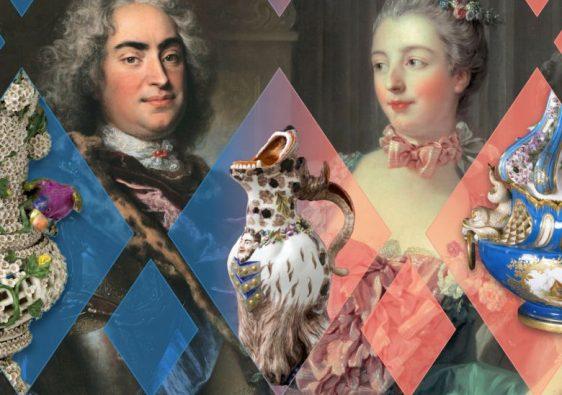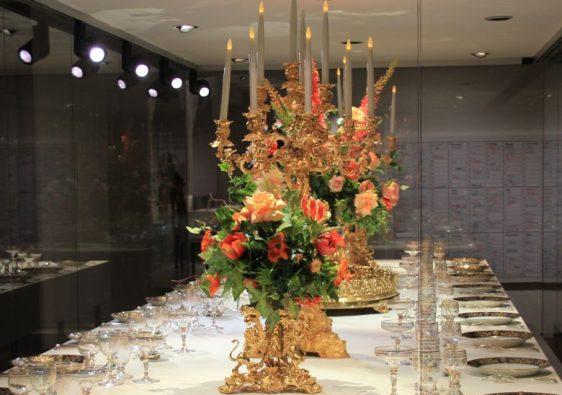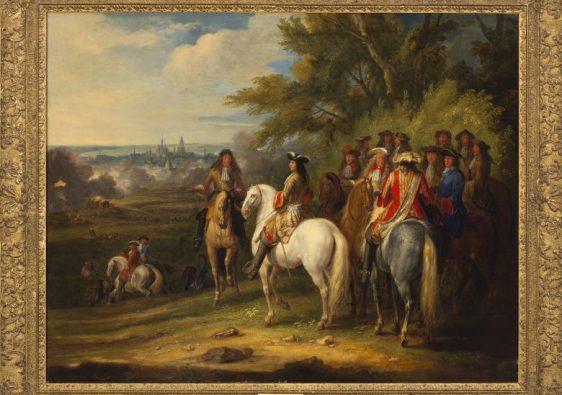From 14 December 2023 to 25 August 2024 the Hungarian National Museum in Budapest had an exhibition called Magyar Menyasszony or in English: Hungarian Bride. The exhibition even has its own website, in Hungarian only. There also is a catalogue, in Hungarian only also I guess. According to the media on display was the tableware of grand duchess Alexandra Pavlovna of Russia, which she took as a dowry for her marriage to the Palatine archduke Joseph, and the alleged headdress of Katharina of Brandenburg.
A friend of mine, Stig Nielsen from Denmark, happened to be in Budapest in August 2024 and wrote a short report for me, focusing on the noble and royal part of the exhibition, although there were also lots of dresses from unknown Hungarian women. The photos were made by him and thus copyrighted.
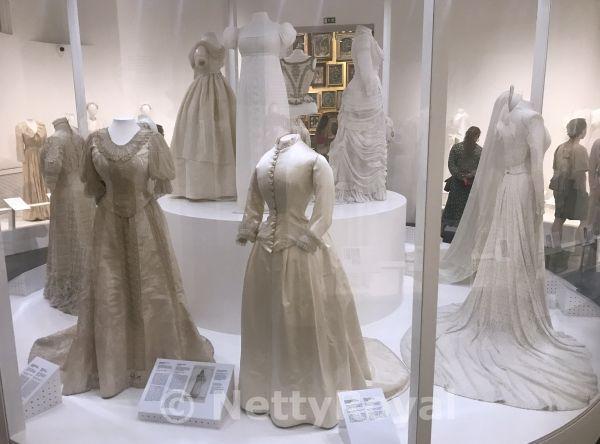
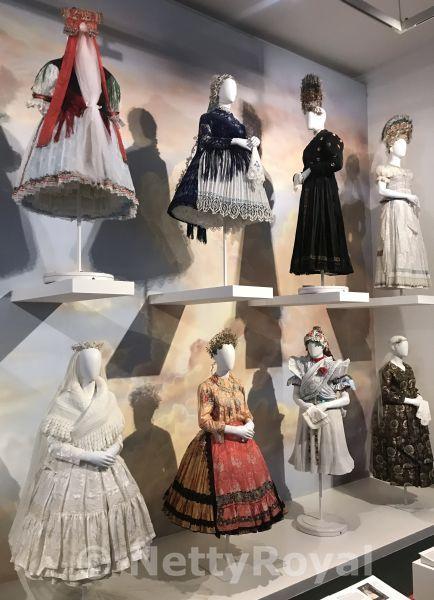
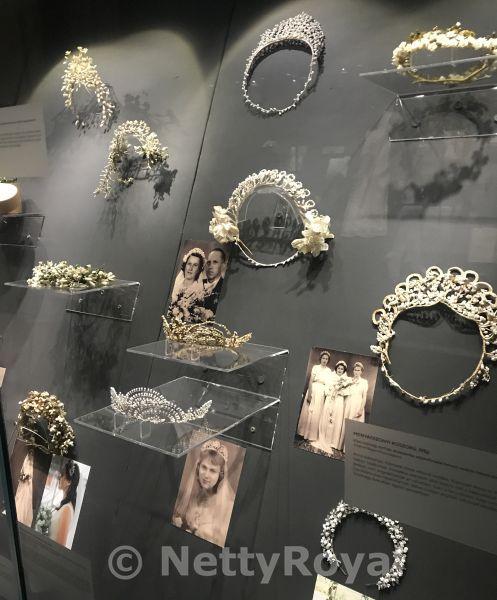
The exhibition
Hungarian bride was the name of one of the most successful exhibitions ever held at the Hungarian National Museum in Budapest – an exhibition that, even on its closing date of 25 August 2024, still drew long queues of visitors. They could look forward to an exploration of 500 years of bridal history, focusing on traditions and attire. The highlight was a display of many older and newer wedding dresses – both haute couture and more ordinary gowns, avant-garde creations in various colours and traditional folk costumes.
Another significant part of the exhibition consisted of photographs accompanied by texts and artefacts relating to a wide range of bridal couples, both famous and unknown – among them several royal and noble couples:
Emperor Franz Joseph of Austria (1830-1916) and Duchess Elisabeth (Sisi) in Bavaria (1837-1898)
Elisabeth was only 16 when she got married in Vienna and became Austrian empress consort in 1854. It was in fact her older sister who had been expected to marry the emperor, but when his eyes fell on Elisabeth, he instantly knew that she was the one for him. The Austro-Hungarian Compromise of 1867 created the dual monarchy of Austria-Hungary, so Franz Joseph and Elisabeth were officially crowned King and Queen of Hungary and were presented with a palace in Gödöllő near Budapest. Sisi grew very fond of Hungary, and her youngest child was born at the palace in Buda – where also her firstborn child had died 11 years earlier. In 1890 she donated a vestment ensemble created from her wedding dress to the Matthias Church in Buda. The vespers robe from the ensemble was exhibited – see photo.
Crown Prince Rudolf of Austria-Hungary (1858-1889) and Princess Stéphanie of Belgium (1864-1945)
In Hungary, the Crown Prince’s choice of bride was warmly welcomed as on her mother’s side, Stéphanie was the granddaughter of Archduke Joseph (1776-1847), who was an esteemed Palatine of Hungary. After their wedding in 1881, the first common home of Rudolf and Stéphanie was in Prague, and the aristocratic ladies of Prague gave the bride a model of the Church of Our Lady before Týn made of gilded silver. The model was exhibited – see photo.

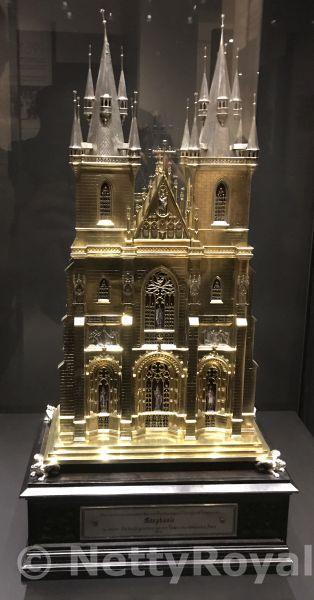
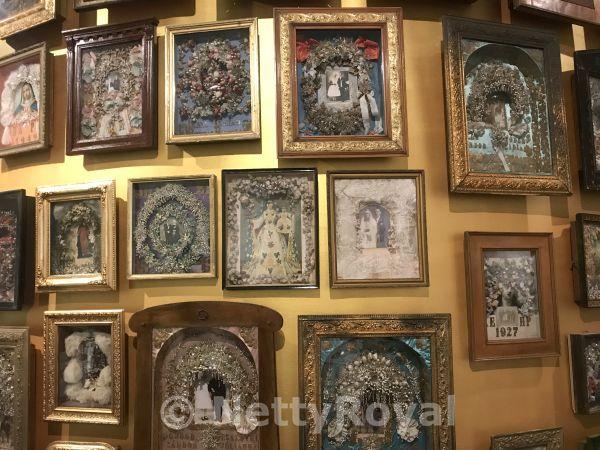
Prince Albert of Thurn und Taxis (1867-1952) and Archduchess Margarethe (Margit) Klementine of Austria (1870-1955)
The bride, who belonged to the Hungarian branch of the House of Habsburg, met her future husband at a fancy dress ball in the royal palace in Buda, which was also where they were married in 1890. The groom was a nephew of Empress/Queen ‘Sisi’, who was much loved by the Hungarians. The wedding celebrations were kept at a modest level due to mourning for the death of his mother two months earlier. Albert purchased the ’Empress Eugenie Tiara’ as a wedding present for Margarethe; the tiara from 1853 was part of the French crown jewels and remained in the Thurn und Taxis family until 1992. The earliest known photo of an indoor wedding in Hungary was taken at Albert and Margarethe’s wedding, and the photo was on display at the exhibition.
Archduke Karl of Austria (1887-1922) and Princess Zita of Bourbon-Parma (1892-1989)
When Karl and Zita were married in 1911, they couldn’t possibly know that they were to become the last emperor and empress of Austria and the last king and queen of Hungary. They also couldn’t know that their marriage would last only 11 years, but this was enough to produce 8 children. Their wedding was attended by the old emperor Franz Joseph, who presented the bride with a diamond tiara, which she wore attached to her headdress during the wedding ceremony. The exhibition showed footage from the wedding, featuring the emperor, the bridal couple and members of their families in gala – with tiaras galore. The film is available on YouTube:
Count István Károlyi (1898-1967) and Princess Mária Magdolna of Windisch-Graetz (1911-2004)
The count and the princess were married in 1930 at her home Sárospatak manor, which was located near the Károlyi family’s estate. This was a union of the crème de la crème of the Hungarian aristocracy, and the wedding was held in the most lavish setting imaginable. The bride wore a Hungarian-style dress and a bonnet belonging to the Károlyi family. The bonnet, decorated with emeralds, gold, silver and freshwater pearl flowers, was exhibited – see photo.
King Zog of the Albanians (1895-1961) and Countess Géraldine Apponyi (1915-2002)
Géraldine was born in Budapest into a noble family with ties to the Habsburg court – her grandmother had thus been a lady-in-waiting to Empress/Queen ’Sisi’. Géraldine herself became an amateur actress and took up work at the National Museum in Budapest (the venue for the exhibition), selling postcards at the kiosk. When King Zog saw her picture, she was invited to his New Year’s Eve party in 1937, and he soon proposed to her. The wedding in Tirana in 1938 was a magnificent ceremony, with the bride dressed in a Coco Chanel gown and wearing a new diamond tiara. It has been said that one of the bridesmaids was the mother of Princess Michael of Kent. An album with photos from the wedding was on display – see picture.
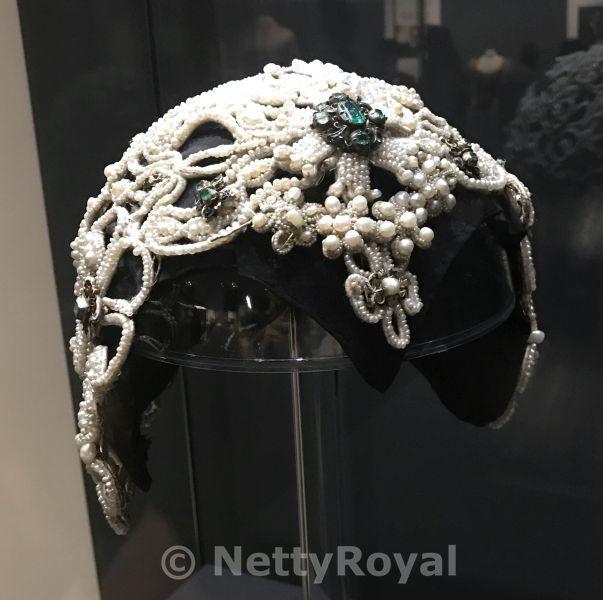
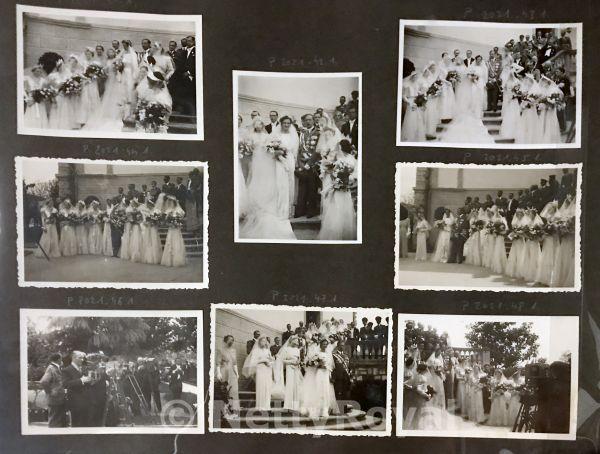
Archduke Otto of Austria (1912-2011) and Princess Regina of Sachsen-Meiningen (1925-2010)
Having fled to West Germany after World War II, Regina worked in a camp for Hungarian refugees in Munich but found it difficult to get on due to her lack of language skills. One day, a particularly engaging young man hurried to her rescue – he was Otto von Habsburg, who was visiting the refugee camp during one of his first journeys after the war. They fell in love and became husband and wife in 1951. After the nuptials, Otto’s sister Adelheid typed a list of wedding gifts sent by Hungarian emigrants to the newly-weds. Next to each name on the list is noted how many photos will be sent to whom as a thank you. The typed list was exhibited.

